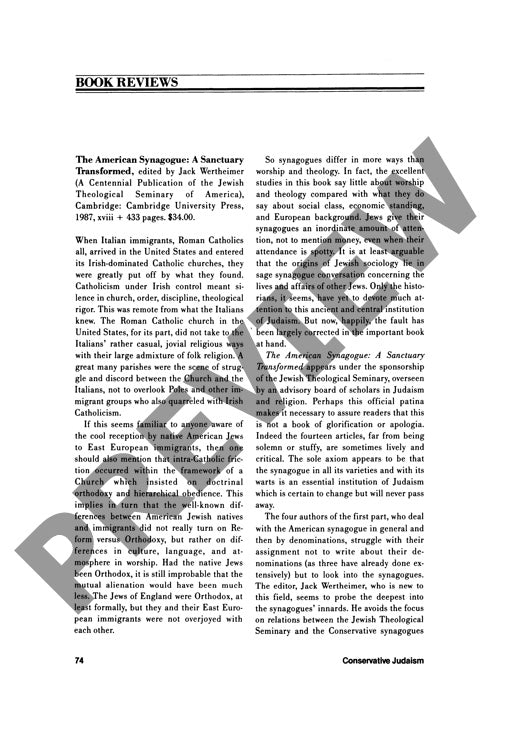Book Reviews
Couldn't load pickup availability
American synagogues evolved far beyond their European predecessors, functioning primarily as cultural and social hubs rather than purely religious institutions. "The American Synagogue: A Sanctuary Transformed," edited by Jack Wertheimer, demonstrates through fourteen detailed articles that synagogue differentiation emerged predominantly from social class, economics, and European ethnic heritage—not theological differences. Drawing from quantitative analysis, social history, and case studies spanning Boston to Seattle, the research reveals significant disparities between denominational requirements and actual congregational practices. The volume documents how suburbanization reshaped Jewish communities, exemplified by Boston's Mishkan Tefila's migration to Newton, while urban institutions like the Brooklyn Jewish Center developed extensive cultural programming. Baltimore's Germanic congregations provide parallel evidence of social factors driving institutional development. Traditional Reform-Orthodox dichotomies prove less influential than previously assumed, as cultural and social dynamics consistently overshadowed theological considerations in determining synagogue formation and membership patterns. Through combined historical analysis and quantitative methods, the research examines shifting gender roles, mixed seating controversies, and educational programming effectiveness. These findings illuminate a fundamental transformation from European models to distinctly American institutional forms, where worship represents just one element among many community functions.

More Information
-
Physical Description
-
Publication Information
Published 1988-1989
ISBN
-
Publication Credits

